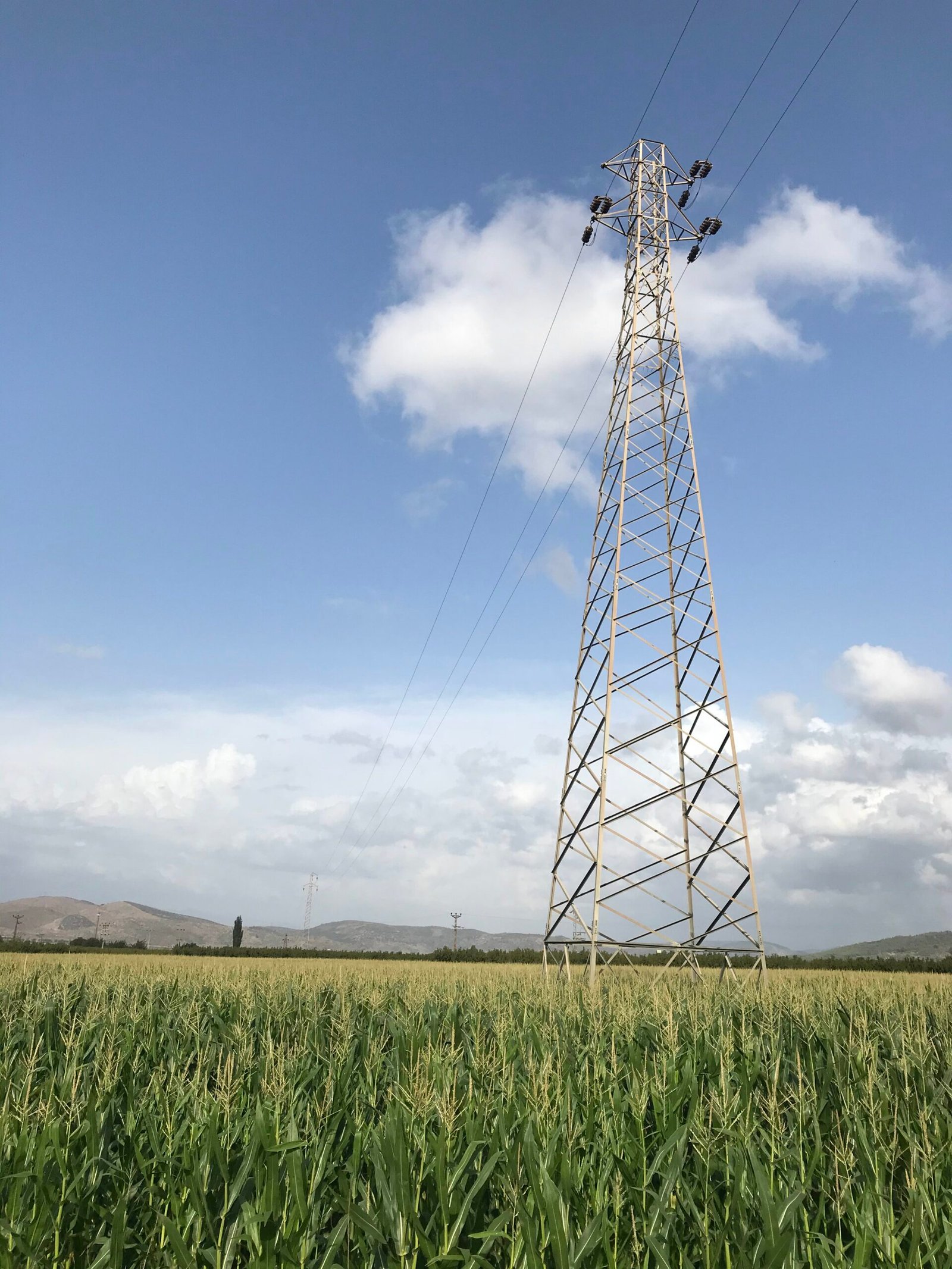Are you ready to take your ATV adventures to the next level? Look no further, because we have the ultimate guide to help you choose the perfect tire size and fit for your ATV. Whether you’re a seasoned rider or just starting out, selecting the right tire size can significantly enhance your off-road experience. In this comprehensive ATV Tire Size and Fit Guide, we’ll explore different tire options, understand how tire size affects performance, and provide you with expert advice to ensure you make the best choice for your ATV. Get ready to conquer any terrain with confidence!

This image is property of images.unsplash.com.
Factors to Consider When Choosing ATV Tire Size
When it comes to choosing the right ATV tire size, there are several factors that you should consider. These factors will help you determine the most suitable tire size for your ATV, ensuring optimal performance and safety while riding. Here are the key factors to keep in mind:
Terrain
The type of terrain you mainly ride on is a crucial factor in determining the ATV tire size. Different terrains require different tire sizes to ensure maximum traction and stability. For example, if you primarily ride on muddy or soft terrains, you may need larger tires with deeper treads to improve traction and prevent getting stuck. On the other hand, if you ride on hard-packed trails, smaller tires with less aggressive treads may be more suitable.
Vehicle Type
The type of ATV you have is another important consideration when choosing tire size. Utility ATVs, designed for heavy-duty tasks such as hauling and towing, may require larger tires with higher load capacity to handle the extra weight. Sports ATVs, on the other hand, focus more on performance and maneuverability, so smaller and lighter tires may be preferred. If you own a side-by-side (UTV), the tire size will depend on the specific model and intended usage.
Load Capacity
Considering the load capacity is vital to ensure that your ATV tires can handle the weight you will be carrying. Each tire has a load index rating that indicates the maximum load it can support. It is essential to choose tires with an adequate load rating to prevent overloading and ensure the safe operation of your ATV. Be sure to factor in the weight of your vehicle, any cargo, and passengers when determining the appropriate load capacity.
Speed Rating
The speed rating of ATV tires indicates the maximum speed at which the tires can safely operate. It is crucial to choose tires with a speed rating that matches or exceeds the intended speed of your ATV. Riding at higher speeds with tires that have a lower speed rating can lead to increased wear, reduced performance, and even tire failure. Always refer to the manufacturer’s guidelines and recommendations for the proper speed rating for your ATV.
Tread Pattern
The tread pattern of ATV tires plays a significant role in determining their performance on different terrains. There are various tread patterns available, each designed to excel in specific conditions. For instance, aggressive, deep-lug treads are ideal for muddy or soft terrains as they provide excellent traction. On the other hand, tires with shallower treads and closer-spaced knobs are better suited for hard-packed trails. Choosing the right tread pattern will ensure optimal grip, stability, and overall performance during your rides.
ATV Tire Size Measurement Guide
Understanding the different aspects of ATV tire sizes is essential when it comes to selecting the right tires for your ATV. Here is a comprehensive guide to the various measurements involved:
Understanding Tire Sizes
ATV tire sizes typically consist of three numbers separated by “x.” For example, 25×8-12. The first number refers to the overall height or diameter of the tire, while the second number represents the width. The final number indicates the diameter of the wheel that the tire is designed to fit.
Wheel Diameter
The wheel diameter measurement represents the size of the wheel that the tire will fit onto. It is crucial to ensure that the tire you choose matches the diameter of your ATV’s wheels. Using a tire with the wrong wheel diameter can result in inefficient performance and potential damage to the tire or ATV.
Tire Width
The tire width measurement represents the distance from one sidewall to the other when the tire is mounted on its intended wheel width. It is important to choose a tire width that is suitable for your ATV’s intended usage and can provide the necessary stability and traction.
Aspect Ratio
The aspect ratio of an ATV tire refers to the ratio of the tire’s height to its width. It is calculated by dividing the tire’s height by its width and is typically expressed as a percentage. The aspect ratio plays a role in determining the tire’s ability to absorb shocks and impacts, as well as its overall stability.
Load Index
The load index of an ATV tire indicates the maximum weight that the tire can safely carry at the maximum indicated tire pressure. It is crucial to choose tires with a load index rating that meets or exceeds the weight requirements of your ATV, including any additional load from cargo or passengers.

This image is property of images.unsplash.com.
Common ATV Tire Sizes and Their Applications
ATV tire sizes can vary, and choosing the right size can greatly impact your ATV’s performance. Here are some common ATV tire sizes and their recommended applications:
25×8-12
This tire size is often used on smaller ATVs for versatile trail riding and light work. The 25-inch height provides a balanced combination of maneuverability and traction, while the 8-inch width offers stability when navigating various terrains.
26×9-12
With a slightly larger height and width compared to the 25×8-12, this tire size provides improved traction and stability. It is commonly used on utility ATVs for light to medium-duty tasks, such as hauling and towing.
27×11-12
The 27×11-12 tire size is often selected for ATVs designed for heavier workloads and rough terrains. The larger height and width offer enhanced traction and load-carrying capacity, making it suitable for challenging off-road conditions.
28×10-14
This tire size is popular among enthusiasts who enjoy aggressive trail riding and challenging terrains. The increased height and width compared to smaller tires provide superior ground clearance and traction, allowing for more adventurous rides.
30×10-14
Designed for extreme off-road enthusiasts, the 30×10-14 tire size offers unparalleled performance and capability. The significantly larger height and width provide exceptional ground clearance, traction, and stability in the most challenging terrains and conditions.
ATV Tire Fitment Guide for Different Terrains
Choosing the right ATV tires for specific terrains is crucial to ensure optimal performance and safety. Here’s a tire fitment guide for different types of terrains:
Mud Terrain
When riding in mud, it is essential to have ATV tires specifically designed for mud terrain. These tires have deep, aggressive treads that dig into the mud, providing the necessary traction to navigate through even the stickiest situations. Look for tires with self-cleaning capabilities, as they will shed mud more efficiently, preventing excessive buildup and maintaining traction.
Sand Dunes
To conquer sandy terrains, ATV tires with paddle-like or scoop-shaped treads are ideal. These tires are designed to dig into the sand, providing enough traction to propel your ATV forward and preventing it from getting stuck. Tires with a wider footprint and lower air pressure can also help maximize flotation over the sand, enhancing stability and control.
Rock Crawling
Rock crawling requires ATV tires with excellent grip and sidewall protection. Look for tires with aggressive tread patterns and reinforced sidewalls to withstand the rugged and jagged surfaces often encountered in rock crawling. Additionally, lower air pressure can improve the tire’s ability to conform to uneven surfaces, facilitating better traction.
Trail Riding
For general trail riding on various terrains, all-terrain or multipurpose ATV tires are a popular choice. These tires strike a balance between traction, stability, and durability, making them versatile for a wide range of trail conditions. Look for tires with tread patterns that offer a good mix of traction and self-cleaning capabilities to handle muddy, rocky, or hard-packed trails.
Snow
When riding in snowy conditions, ATV tires with aggressive, deep treads are essential to provide enough traction and prevent slippage. Additionally, certain tires are designed for use with studded ice grips, further enhancing their performance on icy surfaces. It is important to remember that ATV tires alone may not be sufficient for extreme snow conditions, and additional modifications such as snow chains or tracks may be necessary.

This image is property of images.unsplash.com.
ATV Tire Fitment Guide for Different Vehicle Types
Different types of ATV vehicles have specific tire requirements to optimize their performance and handling. Here’s a tire fitment guide based on different ATV vehicle types:
Utility ATVs
Utility ATVs are designed for heavy-duty tasks, such as hauling, towing, and working on farms or construction sites. These ATVs typically require tires with higher load capacities to handle the extra weight. Additionally, tires with aggressive tread patterns can provide the necessary traction for off-road work environments.
Sports ATVs
Sports ATVs prioritize performance and maneuverability, making them popular among off-road enthusiasts and racers. These ATVs often require tires that are lighter and more responsive. Tires with greater contact patch and stiffer sidewalls can provide improved cornering and traction, allowing for better control during high-speed maneuvers.
Side-by-Side (UTV)
Side-by-Side vehicles, also known as UTVs, offer enhanced seating capacity and cargo hauling capabilities. Depending on the specific model and intended usage, UTV tires can vary greatly. It is important to consider the load capacity, terrain requirements, and specific characteristics of your UTV when selecting tires. Some UTVs may require different tire sizes for the front and rear, so it is essential to consult the manufacturer’s guidelines.
Load Capacity and Ply Rating of ATV Tires
Understanding the load capacity and ply rating of ATV tires is crucial to ensure safe operation and prevent tire failure. Here’s what you need to know:
Understanding Load Capacity and Ply Rating
The load capacity of an ATV tire refers to the maximum weight it can safely support at the maximum indicated tire pressure. It is important to choose tires with a load index rating that meets or exceeds the weight requirements of your ATV, including any additional load from cargo or passengers.
The ply rating of an ATV tire indicates its load-carrying capacity. It represents the number of plies (layers of material) used in constructing the tire’s carcass. However, it is essential to note that the ply rating does not directly correlate to the tire’s load capacity. Modern tire construction techniques and materials have made the ply rating less significant. Instead, focus on the load index to determine the tire’s actual load-carrying capacity.
Choosing the Right Ply Rating for Your ATV
To ensure proper load capacity, it is essential to choose ATV tires with the correct ply rating. The ply rating varies depending on the intended usage and load requirements of your ATV. Tires with lower ply ratings are suitable for lighter duty and general-purpose riding, while tires with higher ply ratings are designed for heavy-duty work or extreme off-road conditions.
It is important to consult the manufacturer’s recommendations or seek professional advice to determine the optimal ply rating for your ATV. Choosing the wrong ply rating can result in tire overheating, premature wear, or even tire failure, compromising your safety and the performance of your ATV.
Importance of Speed Rating in ATV Tires
The speed rating of ATV tires indicates the maximum safe speed at which the tires can operate. Consider the following factors regarding speed rating:
Determining the Suitable Speed Rating
It is important to choose ATV tires with a speed rating that matches or exceeds the top speed at which you typically ride. The speed rating is denoted by a letter, with higher letters indicating higher speed capabilities. For example, a tire with a speed rating of “H” can safely handle speeds up to 130 mph (210 km/h).
The appropriate speed rating ensures that the tires can withstand the forces generated at higher speeds without compromising their structural integrity or performance. Operating at speeds higher than the tire’s speed rating can result in excessive heat buildup, increased wear, reduced tire life, and even tire failure.
Impacts of Incorrect Speed Rating
Using tires with a speed rating lower than your ATV’s top speed can result in several issues. Excessive heat buildup due to the increased friction between the tire and road surface can lead to tire degradation and premature wear. The reduced stability and handling characteristics may also compromise your safety, especially during high-speed maneuvers.
Always refer to the manufacturer’s recommendations and guidelines to determine the appropriate speed rating for your ATV. Choosing tires with the correct speed rating will ensure optimal performance, safety, and longevity.
Choosing the Right Tread Pattern for Your ATV
The tread pattern of ATV tires plays a crucial role in determining their performance on different terrains. Here’s what you need to know about choosing the right tread pattern for your ATV:
Different Tread Patterns Explained
There are various tread patterns available for ATV tires, each designed to excel in specific conditions:
-
Aggressive mud tires: These tires feature deep, spaced-out lugs for enhanced traction in muddy and soft terrains. The aggressive tread pattern allows the tire to dig into the mud and achieve maximum grip.
-
All-terrain tires: These tires offer a versatile tread pattern suitable for a wide range of trail conditions. They strike a balance between traction and self-cleaning capabilities, making them an excellent choice for mixed terrains.
-
Knobby trail tires: These tires feature closely spaced knobs for improved traction on hard-packed trails. The tread pattern provides stability and comfort while offering adequate traction on a variety of surfaces.
-
Sand tires: These tires have paddle-like or scoop-shaped treads that are designed to float on sandy surfaces. The wide-spaced knobs and unique tread pattern allow the tires to dig into the sand, providing the necessary traction to propel forward.
Matching Tread Pattern to Terrain
Selecting the right tread pattern is essential to ensure maximum traction and performance on specific terrains. Consider the predominant type of terrain you will be riding on and choose a tread pattern that is optimized for that condition.
For muddy or soft terrains, opt for tires with aggressive, deep-lug treads that can dig into the mud and provide excellent traction. Conversely, for hard-packed trails or rocky terrains, tires with closer-spaced knobs and shallower treads will offer better stability and control.
Always refer to the manufacturer’s recommendations and consult with experienced riders or tire specialists to ensure that you choose the most suitable tread pattern for your ATV and the specific terrains you plan to ride on.
ATV Tire Maintenance and Care
Proper maintenance and care are essential to ensure the longevity and performance of your ATV tires. Here are some key maintenance practices to keep in mind:
Proper Inflation
Maintaining the appropriate tire pressure is crucial for optimal ATV performance and tire longevity. Underinflated tires can negatively impact handling, fuel efficiency, and tire wear, while overinflated tires can lead to a harsh ride, reduced traction, and possible tire damage.
Regularly check your ATV tires’ inflation pressure using a reliable tire pressure gauge and adjust the pressure according to the manufacturer’s recommendations. It is also important to consider any variations required due to additional loads or specific riding conditions.
Regular Inspection
Inspect your ATV tires regularly for signs of wear, damage, or uneven tread wear. Pay attention to sidewall cracks, bulges, or any objects embedded in the tire tread. Uneven tread wear may indicate improper inflation or misalignment, which should be corrected promptly.
Additionally, inspect the valve stems for damage or leaks, as well as the rim for any signs of corrosion or damage that may affect tire sealing. Regular inspections will help you identify potential issues before they escalate and ensure safe operation.
Rotation and Balancing
Rotating your ATV tires regularly promotes even wear and extends their overall lifespan. Consult your ATV owner’s manual or tire manufacturer’s guidelines for the recommended rotation intervals and patterns. Properly balanced tires will improve stability, reduce vibrations, and prevent premature wear. If you notice any vibrations or uneven wear, consider having your tires professionally balanced.
Replacement and Disposal
Like any other component, ATV tires will eventually wear out and require replacement. The rate of wear depends on various factors such as riding conditions, frequency, and maintenance practices. It is crucial to monitor tread depth regularly to ensure that your tires are not excessively worn. Consider replacing your tires when the tread depth reaches the manufacturer’s recommended minimum or if there are signs of sidewall damage or other safety concerns.
When disposing of old tires, it is important to follow proper procedures to ensure environmental responsibility. Contact local recycling facilities or tire retailers for information on tire disposal and recycling options.
FAQs About ATV Tire Size and Fit
Here are answers to some commonly asked questions about ATV tire size and fit:
Can I Use Different Tire Sizes on My ATV?
In most cases, it is recommended to use the tire sizes specified by the manufacturer for your ATV. Deviating from the recommended tire sizes can affect your ATV’s performance, handling, and safety. However, depending on your ATV’s design and modifications, certain models may allow for slight variations in tire sizes. Always consult the manufacturer’s guidelines or seek professional advice when considering different tire sizes.
Can I Change Tire Size on My ATV?
Changing the tire size on your ATV is possible, but it should be done with careful consideration. Altering the tire size can impact various factors, including speedometer accuracy, ground clearance, handling, and even suspension performance. If you are considering changing the tire size on your ATV, it is essential to consult the manufacturer’s recommendations or seek professional advice to ensure compatibility with your ATV’s specifications and intended usage.
What Happens if My ATV Tires Don’t Fit Properly?
Using tires that do not fit properly on your ATV can have several negative consequences. Improper tire fitment can lead to compromised handling, reduced performance, and increased risk of accidents. It can also cause excessive stress on the drivetrain components, leading to premature wear and potential damage. Additionally, incorrect tire fitment may affect the accuracy of the speedometer, compromising your ability to gauge speed and distances accurately. Always ensure that the tires you choose match the recommended specifications for your ATV.




